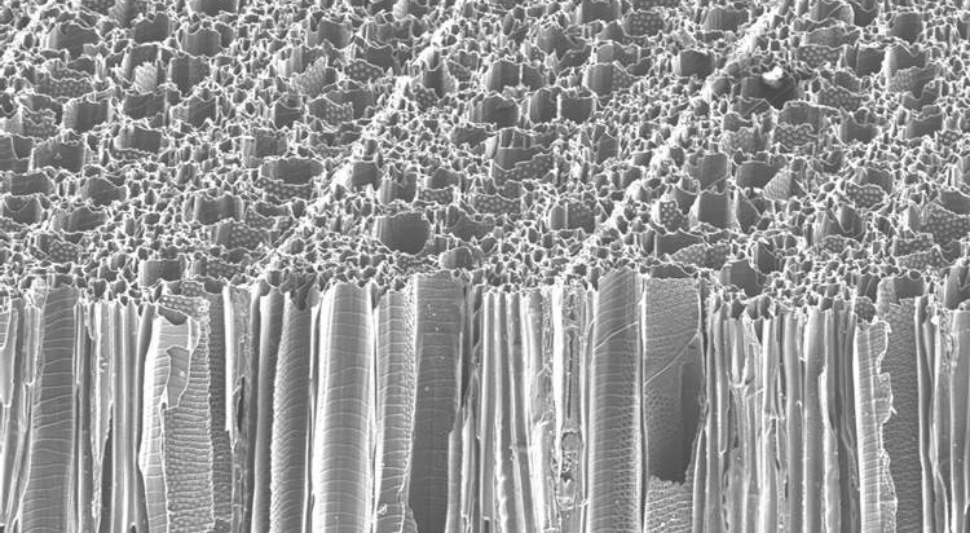Matthew Wood, April 28, 2017
Due to our growing reliance on battery power for everything from phones to laptops to electric vehicles, there?s an increased demand to make those batteries last longer.
So a team from the University of Maryland is looking for a breakthrough in battery power from a simple, but unconventional, component: wood.
The work is headed by Ying Zhang, a Maryland Ph.D. student who is a visiting scholar from China. She has found a way to use wood as a substitute for the negative electrode in a lithium ion battery, which helps prevent the battery from failing. In most batteries, lithium build-up occurs due to the constant expanding and deflation due to charging. This reaction can cause overheating and shorten the battery life.
Zhang says the wood has natural channels, which help transport water and nutrients. That helps to provide a place for the lithium current. She describes the process as something like a hotel, where the wood provides numerous channels to accommodate the lithium metal, storing it securely while maintaining the wood?s structure.
?The wood has many channels like many rooms with many doors,? she says. ?If you have two guests, one door is OK. But if you have 100 guests, the one door is not enough for that excessive amount.?
Compare that to a traditional lithium battery, with only one ?door.? That leads to potential safety hazards, not to mention a much less stable battery.
?This technology using a degradable material to achieve a safer battery,? says Lianbing Hu, a materials science and engineering professor at Maryland who is the project?s senior research group leader. ?The stable metal anode can be used in the next-generation high-energy-density batteries.?
The results from this new process are beneficial in a number of different ways. Not only does it provide a potentially significant increase in power for portable electronics, but the use of wood makes the battery much lighter and more sustainable.
?Wooden material is very common in our daily lives,? Zhang says. ?That?s one of the things that makes us very excited for this project.?She has been studying with Hu, who has been researching the use of wood in a number of projects (you may remember our story on his work with the use of wood as windows).
?Trees are sustainable and renewable materials, where wood from trees is almost the most abundant material we can use,? he says. ?In the past 5 years, my group spent a lot of time on wood-derived cellulose and its applications. Now we are more focused on the wood, which has unique channel-structure. The applications we would like to focus on include batteries, solar stream system and functional membranes.?

This project was funded by Nanostructures for Electrical Energy Storage, a multi-institutional research center started by the Department of Energy. Their research was published last month in the Proceedings of the National Academy of Sciences. Hu says the potential results could help impact the industry.
?A lithium metal anode is appealing for everyday use because it is a trend for Li-ion batteries? development towards lightweight and high-energy-density,? he says. ?The portable electronics can benefit a lot from using this anode.?
Zhang says there is still much work to be done before the research can be translated into actual results that consumers will see. But she hopes it will be carried on even after she returns to China in the summer.
?There is still a lot of application stuff, a lot of work should be done,? she says. ?But we have a good start.?
So, in the future, when your battery lasts longer than you could ever have imagined, you?ll know who to thank.







 See what's coming up live on B1G+ every day of the season at BigTenPlus.com.
See what's coming up live on B1G+ every day of the season at BigTenPlus.com. 